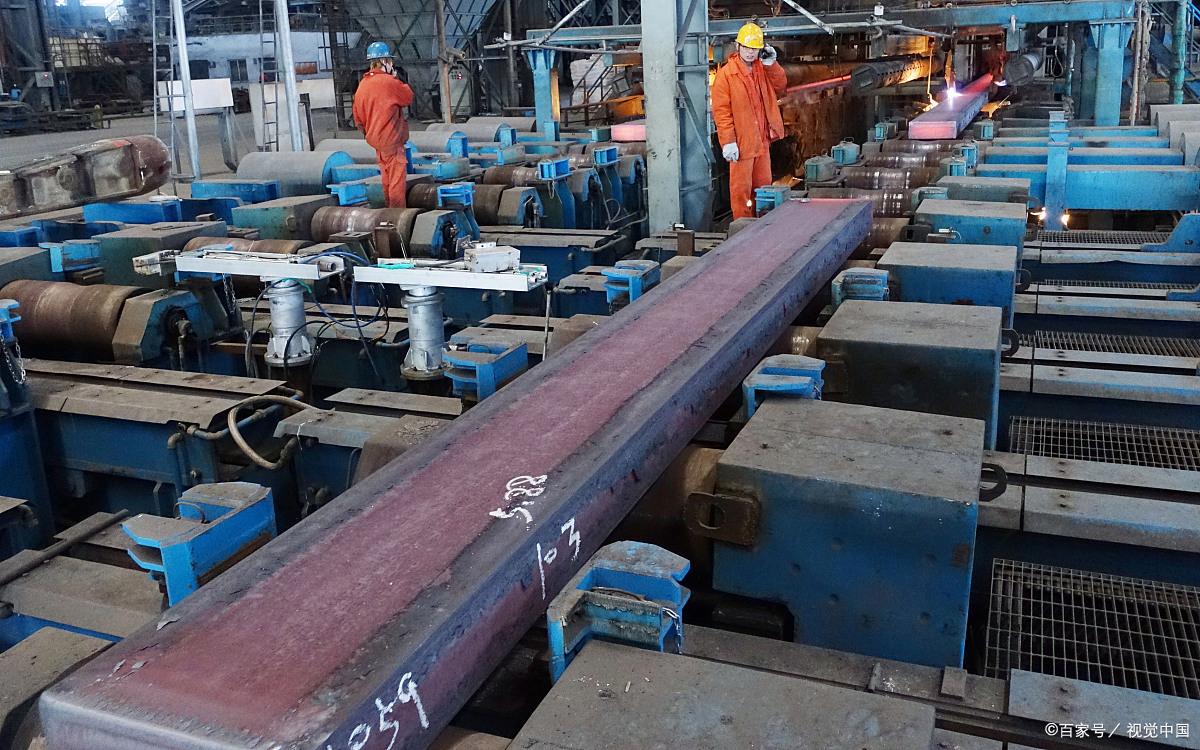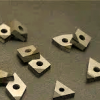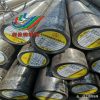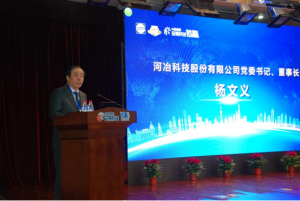
Brand: Cr4Mo4V
Material: Bearing steel
The chemical composition of Cr4Mo4V is as follows:
-Carbon (C) content: 0.75-0.85%
-Silicon (Si) content: ≤ 0.35%
-Manganese (Mn) content: ≤ 0.35%
-Phosphorus (P) content: ≤ 0.027%
-Sulfur (S) content: ≤ 0.020%
-Molybdenum (Mo) content: 4.00-4.50%
-Chromium (Cr) content: 3.75-4.25%
-Vanadium (V) content: 0.90-1.10%
-Copper (Cu) content: ≤ 0.20%
-Nickel (Ni) content: ≤ 0.20%
Cr4Mo4V is a high-temperature bearing steel with performance characteristics similar to M50 in the United States, and belongs to the category of martensitic steel. This type of steel has the characteristics of high-speed steel in terms of heat treatment process and performance, but it contains fewer gold elements, so its high-temperature hardness is not as good as high-speed steel. In addition, the forging and processing performance of Cr4Mo4V steel is poor.
The smelting method of Cr4Mo4V steel adopts electric arc furnace and electric slag remelting. During the forging process, the initial forging temperature of Cr4Mo4V steel is generally 1070-1150 ° C, and the final forging temperature is not lower than 900 ° C. Due to the good hardenability of the steel, it should be slowly cooled and tempered in a timely manner after forging. The annealing after forging can be carried out using continuous annealing or isothermal annealing processes. During isothermal annealing, heat to 840-860 ° C, hold for 4-6 hours, cool in the furnace to 720-740 ° C, hold for 3-5 hours, and then slowly cool at a rate of 20-30 ° C/h to 550 ° C. The hardness after annealing is 197-241HB. The annealed structure consists of pearlite composed of point like and fine-grained carbides and a small amount of primary carbides. There are five types of carbides in annealed state: MC, M2C, M7C3, M6C, M23C6.

The quenching heating temperature of Cr4Mo4V steel is 1100~1120 ° C, quenched in oil. When heated at relatively high temperatures, most of the carbides in the steel dissolve in austenite. After quenching at 1120 ° C, the carbides decrease to about 1.2%, and the residual austenite content is about 28%. The remaining carbide types are MC and M2C. After quenching, martensite with high alloy to carbon ratio is obtained, thus possessing high tempering stability. The grain size after quenching is 8-10 levels, and the hardness is not less than 63HRC.
After quenching, Cr4Mo4V steel undergoes three rounds of tempering (540~550 ° C) for 2 hours, followed by air cooling. Through tempering, residual austenite can decompose and highly dispersed carbide points MC and M2C can precipitate in martensite, resulting in high hardness (60~64HRC). The fracture toughness at room temperature is 1726MPa · m/200 ° C, and the fracture toughness at room temperature is 24.16MPa · m1/2.
Cr4Mo4V steel can work at 430 ° C (with a high temperature hardness greater than 54HRC) or work for a long time at 316 ° C (with a high temperature hardness greater than 57HRC).

To further improve the service life and reliability, dual vacuum Cr4Mo4V steel has been developed, with stricter control range for harmful elements and specified oxygen content index: wo ≤ 10ppm. Quality control of the steel has also been strengthened, and the grade has been renamed 8Cr4Mo4V. The oxygen content of the steel is 2.7-9.0 ppm, and the total amount of inclusions is 33% of that of electroslag steel; The maximum diameter of oxide particles is 5 μ m, while that of electroslag steel is 11.95 μ m; Unsolved coarse carbides are finer and more dispersed than those in electric slag steel; The contact fatigue life L10 at room temperature is 41% higher than that of electric slag steel, and the contact fatigue life L10 at 200 ° C is 34% higher than that of electric slag steel.
rand: Cr4Mo4V
Material: Bearing steel
The chemical composition of Cr4Mo4V is as follows:
-Carbon (C) content: 0.75-0.85%
-Silicon (Si) content: ≤ 0.35%
-Manganese (Mn) content: ≤ 0.35%
-Phosphorus (P) content: ≤ 0.027%
-Sulfur (S) content: ≤ 0.020%
-Molybdenum (Mo) content: 4.00-4.50%
-Chromium (Cr) content: 3.75-4.25%
-Vanadium (V) content: 0.90-1.10%
-Copper (Cu) content: ≤ 0.20%
-Nickel (Ni) content: ≤ 0.20%
Cr4Mo4V is a high-temperature bearing steel with performance characteristics similar to M50 in the United States, and belongs to the category of martensitic steel. This type of steel has the characteristics of high-speed steel in terms of heat treatment process and performance, but it contains fewer gold elements, so its high-temperature hardness is not as good as high-speed steel. In addition, the forging and processing performance of Cr4Mo4V steel is poor.
The smelting method of Cr4Mo4V steel adopts electric arc furnace and electric slag remelting. During the forging process, the initial forging temperature of Cr4Mo4V steel is generally 1070-1150 ° C, and the final forging temperature is not lower than 900 ° C. Due to the good hardenability of the steel, it should be slowly cooled and tempered in a timely manner after forging. The annealing after forging can be carried out using continuous annealing or isothermal annealing processes. During isothermal annealing, heat to 840-860 ° C, hold for 4-6 hours, cool in the furnace to 720-740 ° C, hold for 3-5 hours, and then slowly cool at a rate of 20-30 ° C/h to 550 ° C. The hardness after annealing is 197-241HB. The annealed structure consists of pearlite composed of point like and fine-grained carbides and a small amount of primary carbides. There are five types of carbides in annealed state: MC, M2C, M7C3, M6C, M23C6.

The quenching heating temperature of Cr4Mo4V steel is 1100~1120 ° C, quenched in oil. When heated at relatively high temperatures, most of the carbides in the steel dissolve in austenite. After quenching at 1120 ° C, the carbides decrease to about 1.2%, and the residual austenite content is about 28%. The remaining carbide types are MC and M2C. After quenching, martensite with high alloy to carbon ratio is obtained, thus possessing high tempering stability. The grain size after quenching is 8-10 levels, and the hardness is not less than 63HRC.
After quenching, Cr4Mo4V steel undergoes three rounds of tempering (540~550 ° C) for 2 hours, followed by air cooling. Through tempering, residual austenite can decompose and highly dispersed carbide points MC and M2C can precipitate in martensite, resulting in high hardness (60~64HRC). The fracture toughness at room temperature is 1726MPa · m/200 ° C, and the fracture toughness at room temperature is 24.16MPa · m1/2.
Cr4Mo4V steel can work at 430 ° C (with a high temperature hardness greater than 54HRC) or work for a long time at 316 ° C (with a high temperature hardness greater than 57HRC).

To further improve the service life and reliability, dual vacuum Cr4Mo4V steel has been developed, with stricter control range for harmful elements and specified oxygen content index: wo ≤ 10ppm. Quality control of the steel has also been strengthened, and the grade has been renamed 8Cr4Mo4V. The oxygen content of the steel is 2.7-9.0 ppm, and the total amount of inclusions is 33% of that of electroslag steel; The maximum diameter of oxide particles is 5 μ m, while that of electroslag steel is 11.95 μ m; Unsolved coarse carbides are finer and more dispersed than those in electric slag steel; The contact fatigue life L10 at room temperature is 41% higher than that of electric slag steel, and the contact fatigue life L10 at 200 ° C is 34% higher than that of electric slag steel.














Add comment